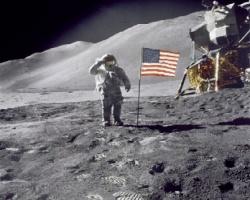Ask most folks around NASA what lured them into the space business and they’ll tell you about how shivers ran down their spines watching Neil Armstrong step onto the moon in 1969.
That’s a problem for an agency that exists to inspire the young and explore the unknown.
“The first time I ever heard of people going to space was when I was 6 years old and the Challenger accident was live on TV. From then on, I was really interested,” said Nicholas Skytland, an engineer and project manager who is among the mere 4 percent of NASA employees under age 30.
The picture isn’t much brighter for the under-40 crowd, which comprises just 16 percent of NASA’s work force.
Skytland and three colleagues recently brought the point home to NASA on its home turf. They created a PowerPoint presentation illustrating the differences between Baby Boomer communication styles, technologies and work relationships and the modus operandi of Generation Y, or GenY, generally considered to include people born in the early 1980s through about 2000.
The presentation, which referenced social media and networking tools such as Twitter, SlideShare, Facebook and other personally generated content streams distributed via the Internet, was widely circulated among NASA. It eventually caught the attention of then-administrator Michael Griffin, who passed it along to all his senior managers.
“We started off looking internally first, how it applies to keeping employees and recruiting new ones,” Skytland said. “Now PAO (NASA’s public affairs office) has embraced the social media part of it.”
The idea is to open NASA so that people worldwide can directly participate in the agency’s exploration initiatives.
“We’re exploring what a government role in public social networking sites is,” said Bob Jacobs, the deputy assistant administrator for public affairs, who was twittering on two accounts about shuttle Discovery’s launch preparations during an interview Sunday at the Kennedy Space Center in Florida.




